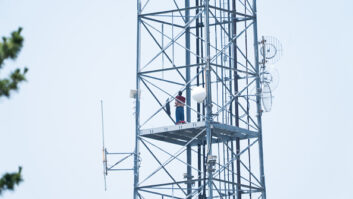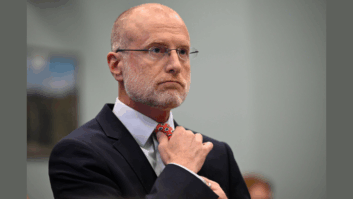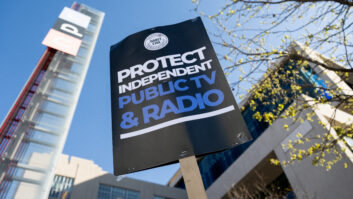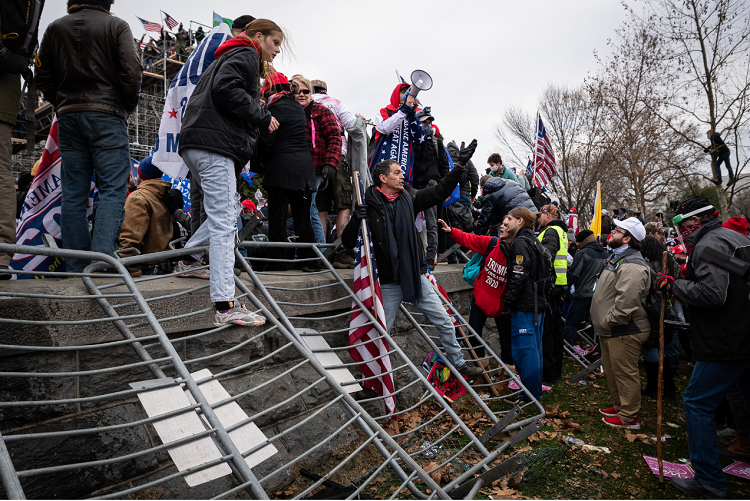
Even before pro-Trump protestors gathered at Washington’s Ellipse on Jan. 6, 2021, journalists at WTOP, Hubbard Radio’s highly rated all-news radio station, were aware that it would be no ordinary political rally.
“We knew that there were going to be a lot of people in attendance,” said Director of News and Programming Julia Ziegler. “We knew which groups had permits to be there — there were many of them — and we knew that the president would be speaking. So you had all the makings of a very large event.”
Still, it was shocking when the election protest and rally turned into violent attacks in and around the Capitol building. When it did, the three WTOP reporters on site and the entire WTOP news team kept Washington informed.
Ready for trouble
There were signs that the rally would be emotionally charged. The president had spent two months fanning political division with unfounded assertions about a rigged election. Even the name of the event, the “Save America Rally,” was designed to stoke fury as the joint houses of Congress were ratifying Joe Biden’s Electoral College victory down the street.
Still, there have been emotionally-charged political rallies in Washington over the last year. WTOP field reporters Alejandro Alvarez and Ken Duffy knew to keep a low profile by using their consumer smartphones to file reports and capture/file photos, audio and video back to the station.
“In these kind of tense situations, you always have to think about what makes you a target as a reporter,” said Ziegler.
“So if you’re a journalist out there recording on your phone, you can mix into the crowd where everyone else is using their phones.”
Given the subsequent events — with protestors painting “Murder the Media” and smashing an Associated Press camera position, and with subsequent videos emerging of crowd confrontations with other journalists — their caution seems prudent.
[Watch a video of the crowd destroying media equipment.]
“We always tell our reporters to pull back as need to stay safe,” she added. “At certain points during that day, they had to.”
Getting news to the station
The downside of using smartphones at public events is that wireless networks are prone to slowing down due to traffic.
WTOP’s reporters relied on WhatsApp to get their audio and text messages back to the station. They have found WhatsApp to be pretty reliable even when cell service starts to fail. They also use Skype and Slack as well. For video, WTOP uses Slack or pulls videos from Twitter.
“The fact that WhatsApp sends out content as soon as you record it really helps,” said Ziegler. “You don’t have to upload or download it after recording: It just goes.”
Those incoming feeds turned up on a common channel that is shared among the WTOP newsroom staff so that everyone can see what’s coming in as it arrives.
Capitol Hill Correspondent Mitchell Miller was at his broadcast booth at the House of Representatives, keeping an eye on the joint session.
Equipped as it is with a suite of links back to WTOP, Miller was in place when doors and windows were smashed and people started breaking into the Capitol building. He provided a steady stream of reports about the invasion no matter what was going on.
“Mitch is fabulous. He’s been with WTOP for a very long time, and he’s just one of those reporters who gets it and understands what the audience needs to hear in that moment,” said Ziegler.
“Whether during the lockdown or afterwards when he was being evacuated along with the Capitol Hill staff, Mitch kept us fully informed with multiple reports per hour as the situation evolved.”
Miller wrote after the event: “When guns were drawn and furniture was moved to block an invasion of rioters from the U.S. House chamber, the danger here at the Capitol was very clear. My broadcast booth is located across the hall from the House chamber, and as the Capitol went into lockdown, the doors of the area where I work with other Capitol Hill reporters were locked for safety.
“Every door that shut loudly, along with the dull roar of people inside and outside of the Capitol, ratcheted up the tension.”
He continued: “When we found out that a woman had been shot inside the Capitol, concern for everyone’s safety continued to rise. I later learned that the shooting happened just a floor below us, in an area known as the Speaker’s Lobby, which is outside the House chamber. I was also alarmed when I saw all the protesters gathered on the steps of the east side of the Capitol. That never happens.”
Despite the danger around him, “I continued to report on the events in real time, all the while trying to remain fully aware of my surroundings, which were troubling, to say the least,” he wrote.
“Late Wednesday afternoon, we were told by the staff in the House Radio and TV Gallery that everyone in our area needed to evacuate … We quickly gathered up our broadcasting equipment and started moving through the maze of underground tunnels that connect the Capitol to the House and Senate buildings. We were escorted to a media room in the Rayburn Office Building. We were able to still report on what was happening as we essentially sheltered in place, as lawmakers and staff members were doing.”
WTOP field reporter Alejandro Alvarez was outside watching the angry crowd as the president’s incitements spurred the crowd to violence.
“There was one precise moment I can point to when I realized that something immeasurably terrible was underway,” wrote Alvarez afterwards. “It was in the middle of President Donald Trump’s speech, shortly after he had urged his supporters to head for the Capitol.”
“‘Move forward, patriots, we’re taking the Capitol,’ was one of the first things I heard [in the crowd] on arrival at the West Lawn, where the air stung from lingering mace … ‘We’ve been nice for too long,’ I heard someone yell. And another: ‘Where are the gallows?’”
Later in the day, Ziegler said, “There was one point where Ken Duffy was live when the police were repelling the protesters. He’s describing what’s happening to him in the moment and saying things like, ‘Stay with me, Shawn [WTOP anchor Shawn Anderson], give me just a second. I’m getting pushed back. I need to move over here.’ When you hear that, it’s just so captivating, and we had so many of those moments.”
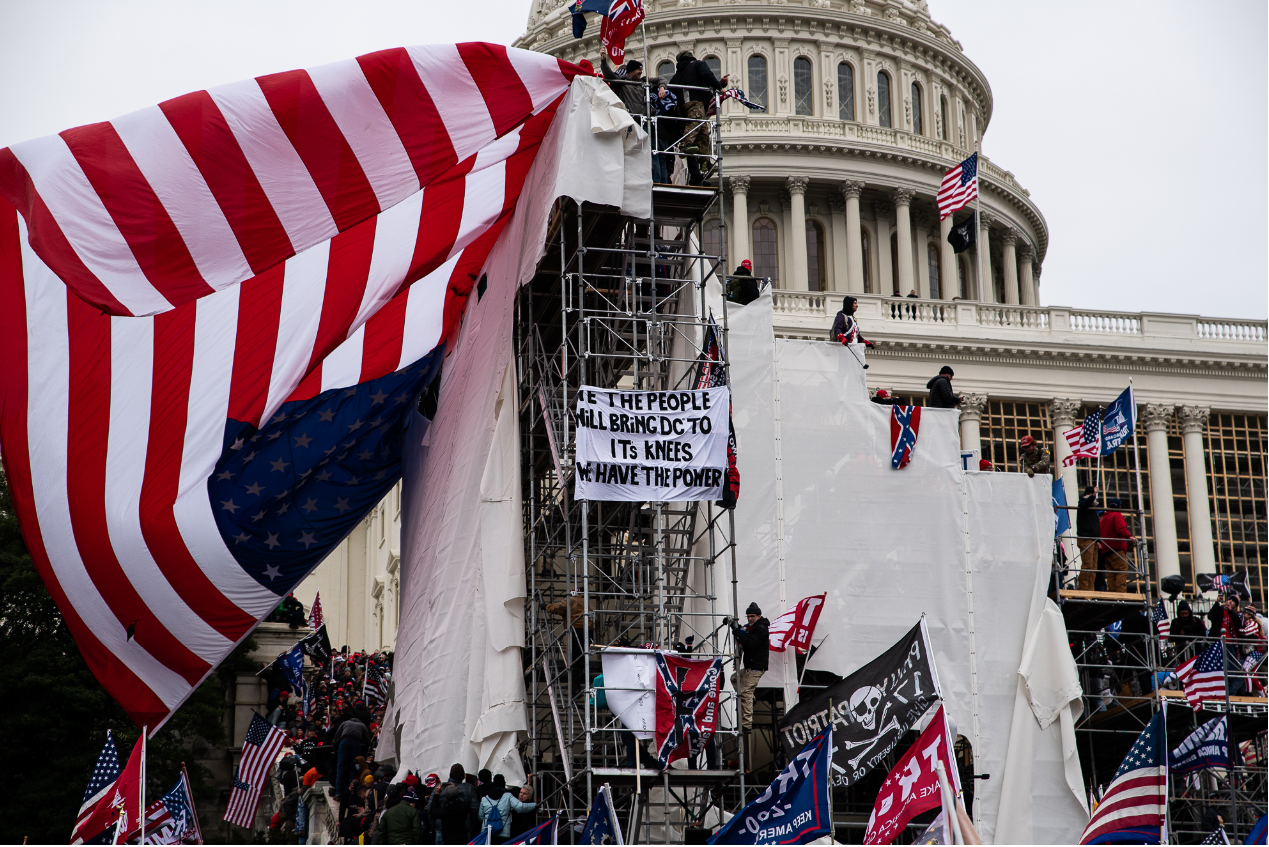
In the newsroom
As the afternoon’s chaotic events unfolded, news staff at the station’s broadcast facilities just across the District border in Chevy Chase, Md., worked to get the news to air.
The hub of the action took place in WTOP’s open newsroom, whose numbers had been depleted due to people working at home thanks to COVID-19.
“Normally we have everyone together in the same room — our broadcast, on-air, and web staff — so that there’s constant one-to-one yelling of information back-and-forth,” said Ziegler.
“To include at-home workers in this during the pandemic, we set up a open conference line and speakerphones so that everyone on shift can talk to and hear each other, whether they are in the newsroom or not.”
This open line of communications made it easy to share news from Capitol Hill as it came in. Meanwhile, whenever someone got swamped by the rush of information, other staff members stepped into help.
“It may sound corny, but we really work as a team,” said Ziegler. “It’s how we’re able to do what we do.”
During its wall-to-wall coverage of the insurrection, WTOP dropped commercial breaks from mid-afternoon Jan. 6 going into the next morning. “But we kept the other breaks built into the clock such as traffic and weather every 10 minutes, sports at :15 and :45, and business at :25 and :55,” Ziegler said.
“Maintaining the traffic reports was incredibly important, because the impact of the riot on traffic was a big part of the story. This said, the rest of the broadcast just flowed organically, as usually happens during a breaking news event.”
[Watch a WTOP video compilation of video tweets by Duffy and Alvarez.]
A couple of days after the assault, with additional images of Jan. 6 violence against both law enforcement and journalists emerging on social media, Alvarez wrote in a tweet, “I have plenty of colleagues on this beat who’ve been attacked or arrested. You know the risks but can’t help but wonder if your next assignment is the one you won’t get to walk away from safe and sound. It’s always at the back of my mind.”
More trouble to come?
Not long after the assault had ended and a curfew implemented, the building was protected by a seven-foot metal fence and the National Guard. Joe Biden had been confirmed as winner of the presidential election, and his inauguration was set to proceed on Jan. 20 — without President Trump in attendance.
The WTOP news team was pressing on to cover the aftermath, as the nation wondered how Trump’s last days in office would unfold, and reports surfaced of further threats against public officials and public buildings between now and the inauguration.
Ziegler expressed pride in WTOP’s team and how they have endured a year of crisis.
“We have gone through COVID, all the protests all throughout the summer/fall of 2020, and then the election. So we’ve been running a marathon and with the inauguration still to come, it’s still not over.
“Journalists are mission-driven people,” she said. “Our purpose is to help people, and our mission at WTOP News is to make sure that we are providing our community with everything they need to know about the biggest stories of the day. [Jan. 6] was huge from many different perspectives, but it’s not the only huge story we’ll be covering this year.”
